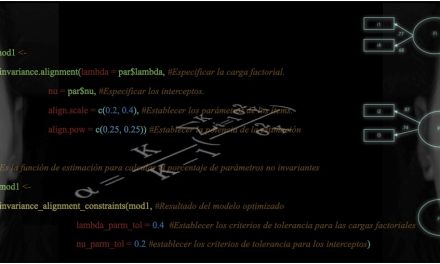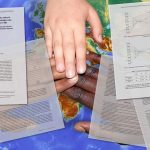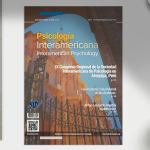
Dopaminergic receptor gene and its effects on migratory behavior

By Julio C. Penagos-Corzo | Universidad de las Américas Puebla | julioc.penagos@udlap.mx
Could migration behavior have associated neurobiological components? Moreover, could such components play a causal role? Against all “psychologistic” intuition, ….. Probably yes.
In evolutionary terms, it is highly probable that if a population belongs to a closed system and concentrates in one place, it will disappear. Its lower variability, as a result of its lack of interaction with other systems or populations, added to any alteration of the environment that is harmful to that population, will eventually extinguish it. From this perspective, it is likely that exploring and migrating out of a place has evolutionary advantages for the species.
The aforementioned contributes to point out that migrating has evolutionary advantages, which can be linked to biological variables. In fact, a study with more than 2300 individuals belonging to 39 population groups reported that human populations that have migrated more, compared to sedentary populations, have a higher frequency of an allele (7R) of a gene (DRD4) responsible for the production of a dopaminergic receptor (Chen et al., 1999). This gene is linked to openness to experience and the tendency to take risks.
As the 7R allele is more frequent in populations that travel a lot, they will normally be more dissatisfied with being in one place and will continue to take risks and travel even more. In addition, people carrying the 7R allele learn faster, are more sensitive to reinforcement, both negative and positive, and are less sensitive to novel stressful stimuli. This would make them more adaptable in migratory processes. The 7R allele of DRD4 has also been found to modulate cultural influences of dependence and interdependence (Kitayama et al., 2014). Although there is contradictory evidence for such findings (Ishii et al., 2021).
Although genetic studies are not generalizable to all species, it is important to note that DRD4 has been linked not only to humans. More recent work also found differences in DRD4 between birds that migrate further and birds that migrate less (Sauve et al., 2020). While with birds it may be fairly intuitive to assume the presence of certain genes that are involved in migration, it is interesting that DRD4 is also involved, as it appears to be with humans (Chen et al., 1999).
However, genetic involvement in migration, according to Lieberman and Long (2018)*, raises two questions: was it dopaminergic genes that caused migration in the populations studied? Or was it other motives and did such genes cause the populations to succeed in their new destinations? Later work by Chen et al. (1999) through genetic analysis finds that individuals with the novelty seeking trait (BN) linked to DRD4 experience higher aptitude during migrations (Matthews & Butler, 2011). Thus, migration distance therefore effectively selects phenotypes and associated alleles, even though individuals with BN traits are no more likely to migrate than other individuals.
Evidence has also been found with significant differences involving the 7R allele, but in the opposite direction. That is, lower frequency in population groups with lower migration (Camperio Ciani et al., 2013). The explanation for this is that probably the functional effect of the DRD4 polymorphism is influenced by the gene-environment relationship on the phenotype.
There is no doubt that other variables drive and guide migration processes. It is perhaps uncontroversial that the most dramatic migrations of the human species are linked to war, to dictatorial regimes with impoverished economies, or to poverty and the search for a better life.
Although it is not advisable to approach migration as an individual process, this does not imply leaving out of the study variables that have an individual impact. In this case, rather than talking about the migration process, we would be talking about variables linked to individuals who migrate. Thus, it is likely that some people have a greater propensity to migrate than their peers, due to personality traits linked to some genetic load. In the case of migration, it seems that this genetic load is related to dopaminergic neurotransmission processes associated with the 7R allele of the DRD4 gene.
References
Camperio Ciani, A. S., Edelman, S., & Ebstein, R. P. (2013). The Dopamine D4 Receptor (DRD4) Exon 3 VNTR Contributes to Adaptive Personality Differences in an Italian Small Island Population. European Journal of Personality, 27(6), 593–604. https://doi.org/10.1002/per.1917
Chen, C., Burton, M., Greenberger, E., & Dmitrieva, J. (1999). Population migration and the variation of dopamine D4 receptor (DRD4) allele frequencies around the globe. Evolution and Human Behavior, 20(5), 309–324. https://doi.org/10.1016/S1090-5138(99)00015-X
Ishii, K., Masuda, T., Matsunaga, M., Noguchi, Y., Yamasue, H., & Ohtsubo, Y. (2021). A reexamination of the effects of culture and dopamine D4 receptor gene interaction on social orientation. Psychologia, 63(2), 137-150. https://doi.org/10.2117/psysoc.2021-B014
Kitayama, S., King, A., Yoon, C., Tompson, S., Huff, S., & Liberzon, I. (2014). The dopamine D4 receptor gene (DRD4) moderates cultural difference in independent versus interdependent social orientation. Psychological Science, 25(6), 1169–1177. https://doi.org/10.1177/0956797614528338
Lieberman, D. Z., & Long, M. E. (2018). The Molecule of More: How a Single Chemical in Your Brain Drives Love, Sex, and Creativity. BenBella Books Inc.
Matthews, L. J., & Butler, P. M. (2011). Novelty-seeking DRD4 polymorphisms are associated with human migration distance out-of-Africa after controlling for neutral population gene structure. American Journal of Physical Anthropology, 145(3), 382–389. https://doi.org/10.1002/ajpa.21507
Sauve, D., Dale, C. A., Tigano, A., Ratcliffe, L. M., & Friesen, V. L. (2020). Do candidate genes for migration and behavior explain migratory variation in bluebirds (Sialia spp.)? Wilson Journal of Ornithology, 132(4), 820–829. https://doi.org/10.1676/19-13
* The source that provided the guideline for this writing is the previously cited book by Lieberman and Long (2018). In Spanish, the title was translated as: Dopamina. Cómo una molécula condiciona de quién nos enamoramos, con quién nos acostamos, a quién votamos y qué nos depara el futuro.
doi: 10.30849/psinteram110 | Download PDF version.



















